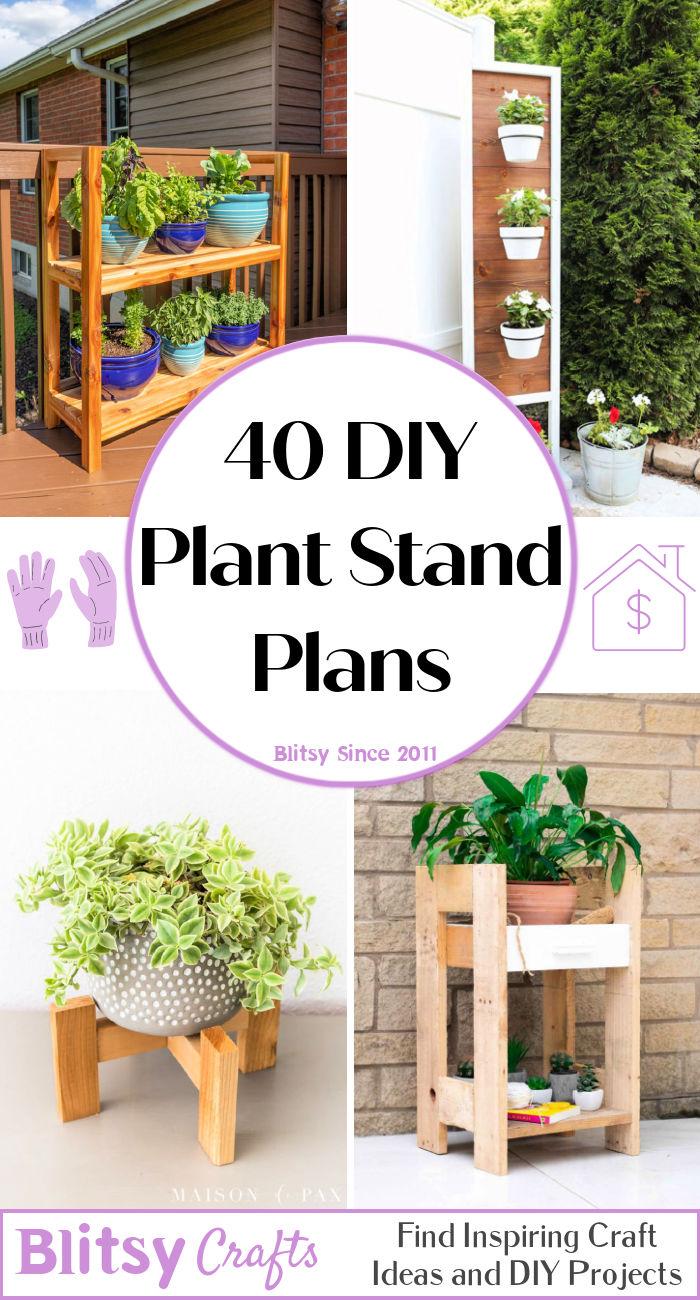
Crafting Custom Wooden Plant Stands for a Flourishing Side Hustle
In the realm of home decor and gardening, plant stands have emerged as a sought-after element, adding both functionality and aesthetic appeal to indoor and outdoor spaces. Recognizing this growing demand, aspiring entrepreneurs are discovering the lucrative opportunity to create custom wooden plant stands, catering to the diverse tastes and needs of plant enthusiasts. This article delves into the art and business of building custom wooden plant stands, providing a comprehensive guide to help you transform your woodworking skills into a profitable side hustle.
Understanding the Market Demand
The popularity of houseplants and gardening has surged in recent years, fueled by the desire for natural beauty, improved indoor air quality, and a connection with nature. This trend has translated into a thriving market for plant-related accessories, including plant stands. Customers seek unique and personalized designs that complement their existing decor, making custom wooden plant stands highly desirable.
Identifying Your Target Market
Before diving into production, it's essential to identify your target market. Consider the following factors:
- Style preferences: Are you targeting minimalist, modern, rustic, or bohemian aesthetics?
- Plant size and types: Will you focus on small succulents or larger, more substantial plants?
- Budget: What price range are you aiming for?
- Location: Are you targeting local customers or selling online to a wider audience?
Designing Your Plant Stands
Crafting custom wooden plant stands involves a blend of creativity and technical expertise. You'll need to consider the following design elements:
Functional Considerations
- Stability: Ensure the stand is sturdy enough to support the weight of the plant and pot.
- Dimensions: Determine the appropriate height and width based on the intended plant size and placement.
- Material: Choose suitable wood types, considering durability, aesthetics, and budget.
- Finish: Opt for a durable and attractive finish that complements the wood and overall design.
Aesthetic Considerations
- Style: Reflect your target market's preferences in your design choices.
- Shape: Experiment with geometric shapes, curves, or unique forms.
- Color: Utilize wood stains, paints, or natural finishes to create desired visual effects.
- Details: Incorporate decorative elements like carvings, inlays, or metal accents.
Crafting Your Plant Stands
Once you have a solid design in place, it's time to bring your vision to life. Here's a step-by-step guide to building custom wooden plant stands:
Materials and Tools
- Wood: Select high-quality wood like oak, maple, walnut, or pine, depending on your design and budget.
- Tools: Basic woodworking tools including a saw, drill, sander, measuring tape, and clamps.
- Fasteners: Screws, nails, or wood glue for assembling the stand.
- Finish: Wood stain, paint, varnish, or natural oils for protection and aesthetics.
Construction Process
- Cut and shape the wood: Based on your design, cut and shape the wood pieces to create the base, tiers, and any decorative elements.
- Assemble the stand: Join the individual pieces using screws, nails, or wood glue, ensuring secure and stable connections.
- Sand the surface: Smooth out any rough edges or imperfections for a polished look.
- Apply the finish: Choose your preferred finish and apply it evenly, allowing adequate drying time.
Marketing and Selling Your Plant Stands
With your handcrafted plant stands ready, it's time to reach your target market. Consider these marketing strategies:
Online Platforms
- Etsy: An established marketplace for handmade and vintage goods, allowing you to reach a global audience.
- Shopify: Create your own online store with customizable themes and payment processing.
- Social Media: Utilize platforms like Instagram, Facebook, and Pinterest to showcase your creations and engage with potential customers.
Local Marketplaces
- Craft fairs: Participate in local events to connect directly with customers and showcase your unique designs.
- Farmers' markets: Find a niche in the growing popularity of gardening and plant-related products.
- Local boutiques: Partner with shops that carry home decor and gardening items.
Pricing Strategies
When determining the price of your plant stands, consider the following factors:
- Cost of materials: Factor in the price of wood, fasteners, finishes, and any other supplies.
- Time invested: Account for the hours spent on design, construction, and finishing.
- Market competition: Research prices of similar plant stands to ensure competitive pricing.
- Profit margin: Set a price that allows for a reasonable profit and covers your expenses.
Tips for Success
As you embark on your journey as a custom wooden plant stand builder, consider these tips for success:
- Continuous learning: Stay updated on woodworking techniques, design trends, and market demands.
- Customer feedback: Seek feedback from customers to improve your designs and products.
- High-quality photos: Capture professional photos of your plant stands to showcase their beauty and craftsmanship.
- Build your brand: Develop a consistent brand identity and message to stand out in the market.
- Excellent customer service: Respond promptly to inquiries, address customer concerns, and ensure a positive buying experience.
Building custom wooden plant stands can be a rewarding and profitable side hustle, allowing you to unleash your creativity and connect with a passionate market. By understanding the market, mastering the craft, and implementing effective marketing strategies, you can create a thriving business that brings beauty to homes and spaces while growing your income.
